24 Jun Two Women, One Dream 100 Years of Legacy Building

In Western North Carolina, the Folk School serenades the mountains with the song of tradition. Listen between studio walls, you’ll hear it: the echo of laughter, the hum of spinning wheels, the whisper of a pencil sketch. Here, community isn’t an ideal, but an everyday practice; 100 years of singing behind the plow is just the beginning of the tune.
In 1925, the Folk School began its work. Olive Dame Campbell served as the school’s director with Marguerite Butler as her assistant. Olive led the school through its early years until 1946, weathering the Great Depression and World War II.
Georg Bidstrup arrived from Denmark in 1926 to manage the school farm. In 1936, he and Marguerite were married. Together, they were instrumental in developing the school dance program together.
Leon Deschamps also arrived in 1926. Over his 19-year career at the Folk School, Leon spearheaded campus-wide projects, most notably the construction of Springhouse, the Dairy Barn, Mill House, Tower House, Hill House, Rock House, and the History Center.
Louise Pitman joined the school in 1928 and spent 17 years developing the fiber arts program. She also served as the Director of Handicrafts, managing the business side of craft.
By the 1930s, Oscar Cantrell was teaching blacksmithing at the Folk School. After WWII, he taught ironwork to returning veterans under the GI Bill.
In 1935, Murrial (Murray) Martin was hired to run the carving program. She expected to stay at the Folk School for only a short time, but she became a longtime Brasstown resident and celebrated her 100th birthday at the Folk School in 2002.
The late 1960s ushered in financial uncertainty, but creativity prevailed. What began as a modest holiday sale grew into a beloved annual celebration known as the Fireside Sale. As the needs of the community shifted, campus drifted away from agriculture, centering on homesteading and craft.
In 1973, Maggie Masters repurposed the dairy barn into the Francis Whitaker Blacksmith Shop. Masters also established the first Fall Festival.
Craft remained the heartbeat of campus under Jan Davidson’s direction in the digital age of the 2000s. New studios emerged for painting, woodturning and book & paper arts. Davidson Hall was constructed, providing space for music, dance, cooking, and more fiber arts.
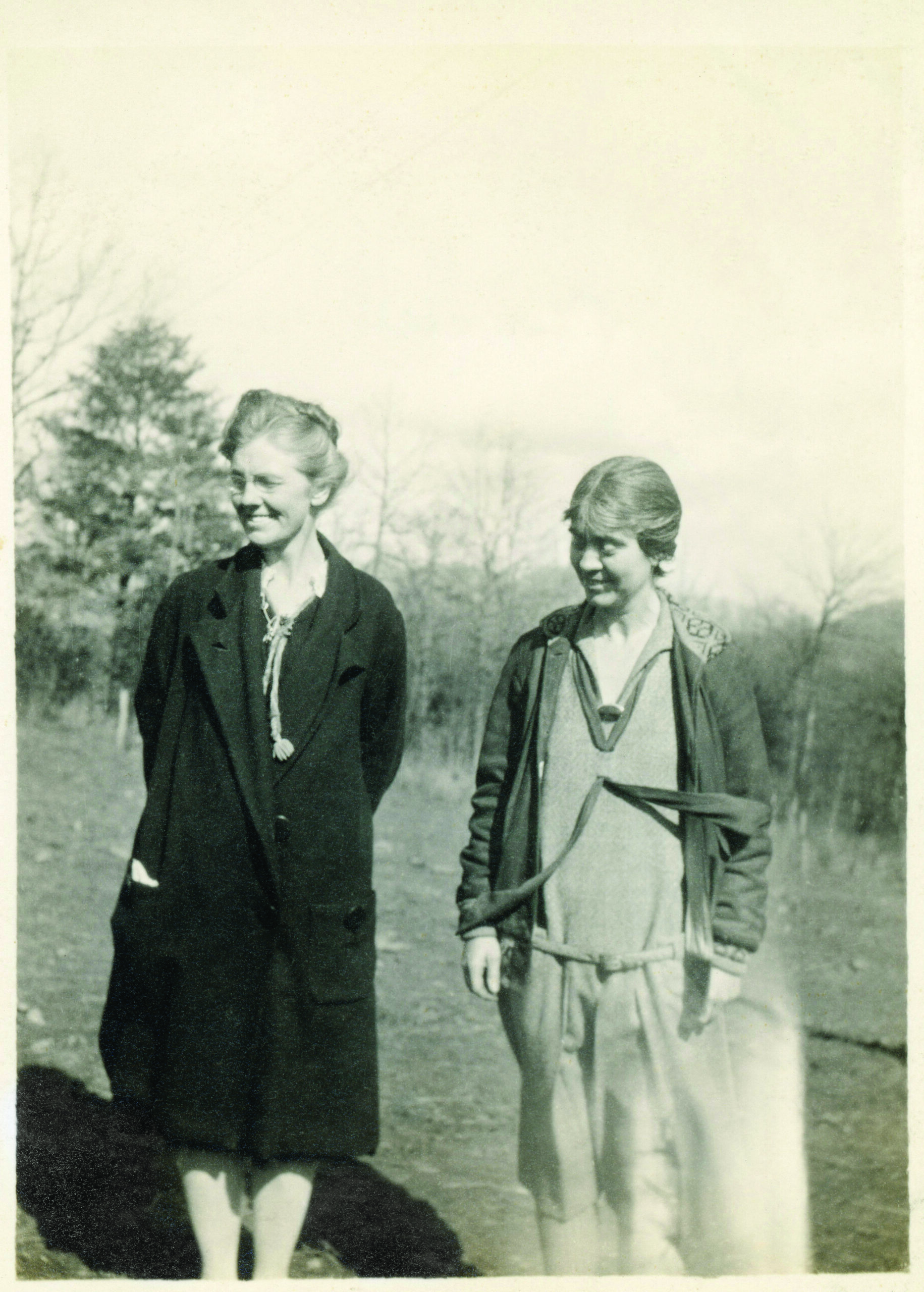
Olive Dame Campbell & Marguerite Butler
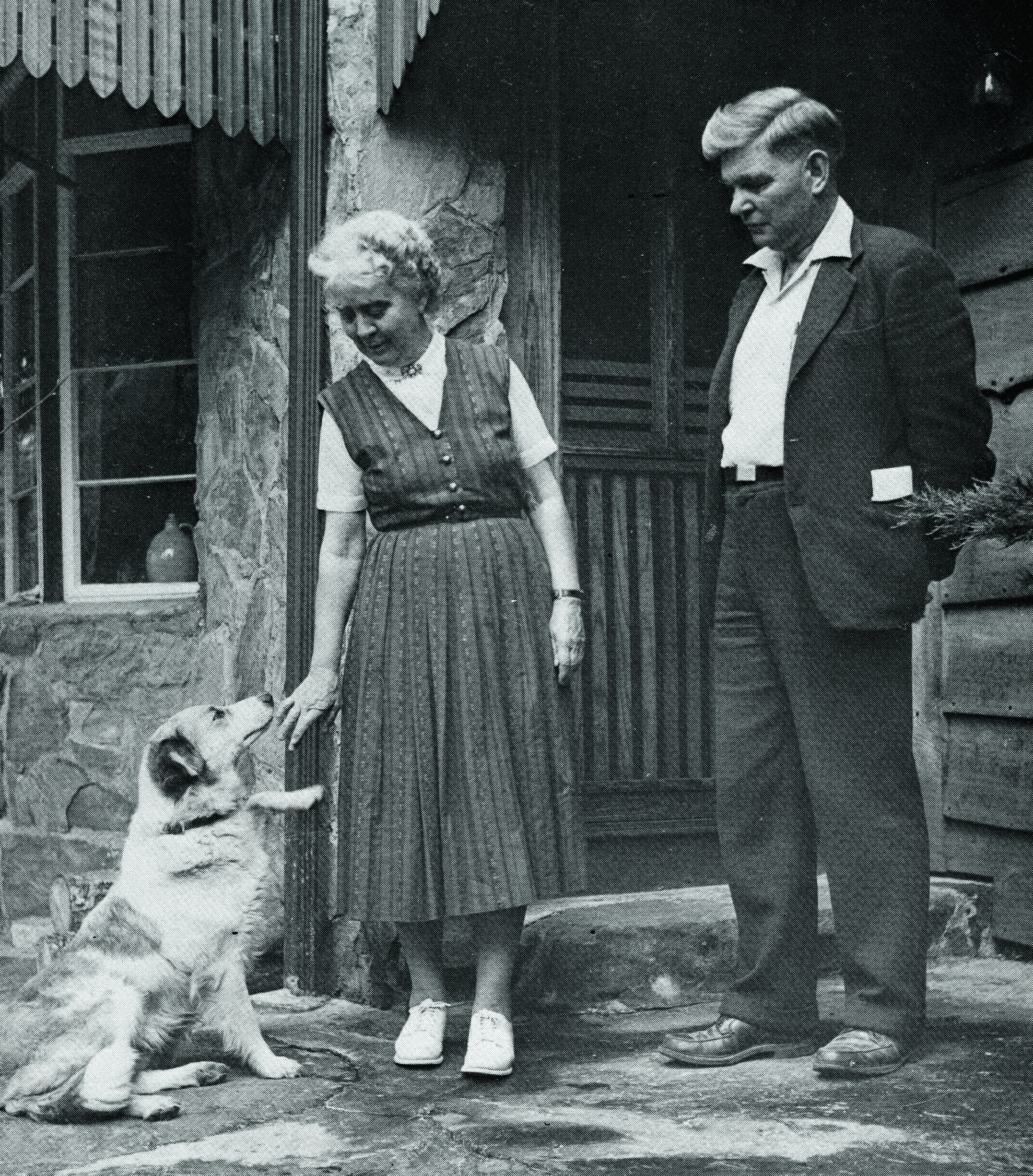
Marguerite & Georg Bidstrup
Looking Forward
Since the early years, much has changed, but our commitment to traditional craft and community has remained the same. For 100 years, the Folk School has transformed lives and brought people together in a nurturing environment for experiences in learning and community life that spark self-discovery. Our vision has remained unwavering: A community that awakens, enlivens, and enlightens the world.
In 2023, Bethany Chaney stepped into leadership, the first woman in four decades to guide the school. With her came a renewed vision, looking toward the future with clarity, never losing sight of the past. We invite you to join our community, celebrating another 100 years of singing behind the plow.
Join Us for the Folk School’s Centennial Celebration
We have a great lineup of events planned for 2025–2026 to honor our anniversary. The year-long celebration will begin at Fall Festival 2025. Visit our website at folkschool.org/100, where we’ll be adding event details, themes, presentations, and much more.
Visit folkschool.org to learn more about Folk School history.
Later Years of the Folk School: 1940s to Present
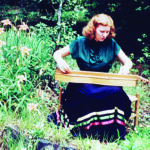
Jean Ritchie
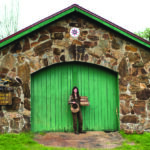
Oscar Cantrell
Blacksmith Shop
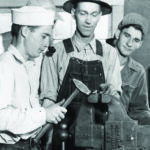
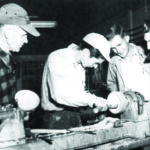
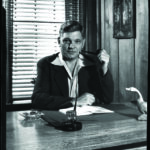
Georg Bidstrup
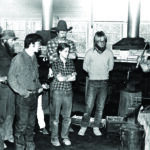
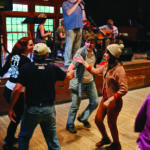
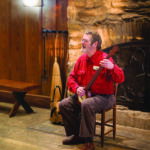
Jan Davidson
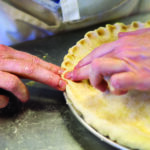
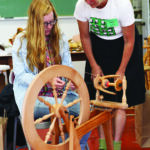
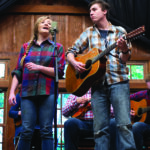
JAM Students

The Clay Spencer
Blacksmith Shop
1940 Hiwassee Dam generates power in the region.
1941-1945 Student enrollment decreases due to the war effort’s need for human resources and building materials.
Jean Ritchie visits the Folk School to visit her sister, May, who was married to Leon Deschamps.
1946 The Oscar Cantrell Blacksmith is built by a team of Quakers from the American Friends Service Committee.
Olive Dame Campbell retires, and Dagnall Folger becomes director of the Folk School.
Postwar, the Folk School becomes an approved veterans’ training site through the GI Bill. Men learn blacksmithing and woodworking skills.
1947 Open House is constructed and used for dances and community meals.
1952 Georg Bidstrup becomes director.
1954 Olive Dame Campbell dies.
1960s & 1970s
1967 John Ramsay becomes director.
Fireside Sale begins as a holiday craft sale.
The NC Arts Council provides support for courses in woodworking, pottery and enameling.
1973 Gus & Maggie Masters assume leadership, end the farming operation, and convert buildings into craft studios.
1974 The Folk School holds its first Fall Festival.
1976 Esther Hyatt Manchester becomes director.
1980s & 1990s
1980 A homesteading program is established to teach back-to-the-land skills.
The Francis Whitaker Blacksmith Shop is established, and with 13 forges, becomes the largest teaching blacksmith shop in America.
The campus became a Historic District on the National Registry of Historic Places.
The 1971 milking barn becomes the Festival Barn.
1982 Marguerite Butler Bidstrup dies.
1983 Bob Fink becomes director.
1985 Bob Grove briefly serves as interim director until Ron Hill fulfills the position.
1989 A folklore program is established through grants from the North Carolina Arts Council.
1991 Bob Dalsemer joins staff as Music and Dance Coordinator and introduces Friday night concerts along with Tuesday and Saturday night dances.
Perry Kelly serves as director for a year.
The Olive Dame Campbell Dining Hall is built.
Jan Davidson becomes director.
1999 Davidson Hall is constructed with the Cooking Studio, Music Studio, and Wet Room Studio.
2000s
2003 The Folk School’s Junior Appalachian Musicians Program begins.
2006 The Painting Studio and Willard Baxter Woodturning Studio open.
The Rivercane Walking trail is created, featuring the work of Cherokee and local artists on exhibit along the trail.
Field House is built, and the Clay Spencer Blacksmith Shop opens. Historic Hill House is renovated.
2017 The Book and Paper Arts Studio opens.
Jan Davidson retires, and Phil Mattox fulfills the position temporarily.
Jerry Jackson becomes director.
2022 Olive’s Porch opens in Murphy, NC.
2023 Bethany Chaney becomes director.



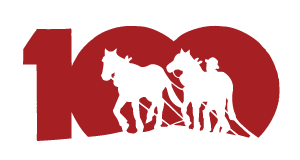
No Comments